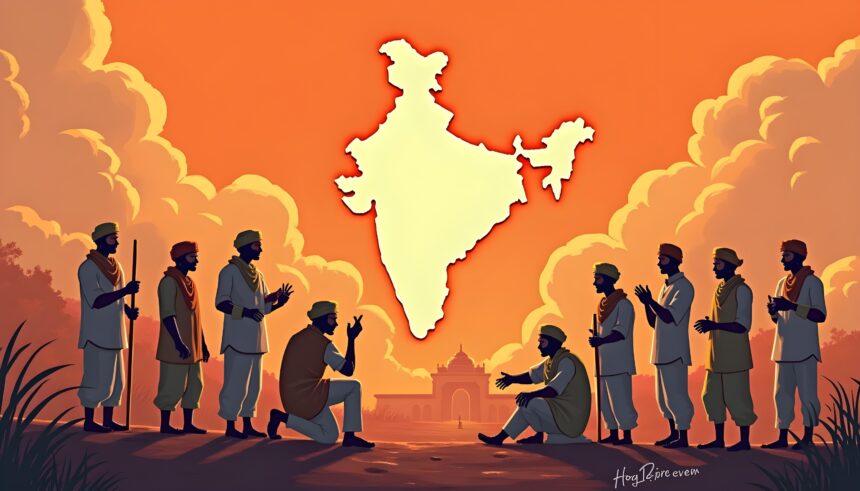Introduction
Equitable land distribution has been a crucial part of India’s journey toward social and economic justice. From colonial times to post-independence reforms, India has seen numerous efforts to ensure that landless communities, especially the marginalized, gain access to land for both agriculture and habitation. This article explores how land distribution unfolded over time and the key policies that shaped this process.
1. Colonial Era Land Surveys and Allocation
During the British rule, comprehensive land surveys were conducted between the 1880s and 1930s, revealing surplus lands not under individual control. These lands, often unused or unsuitable for agriculture, were identified for redistribution. One of the earliest instances of this occurred in the Chengalpattu district, where District Collector Tremaine advocated for the allocation of land to the oppressed Paraiyar community. As a result, about 50 lakh acres of surplus land across India were distributed to marginalized communities. This initiative marked the beginning of formal land allocation to the landless in India.
2. Distribution to Tribal and Mountain Communities
The Shilisi Survey, a comprehensive land survey, also focused on the mountain villages inhabited by tribal communities. Tribes like the Toda, Kota, Malayali, and Kani received ownership rights over the lands they cultivated. However, tribal groups living at the foothills, such as the Paliyars, Irulas, and Kattunayakars, were left out, as their lands remained under the control of the plains people. These tribes remained subjugated as bonded laborers, denied land ownership rights.
3. Post-Independence Land Reforms
After India’s independence, the Zamindari and Inamdar systems were abolished to break the feudal hold on agricultural lands. This allowed for land redistribution to farmers who had worked on the land for years. However, this was a challenging process that took about 20 years to complete through the Resurvey Land Records (RSLR) initiative. Meanwhile, communist movements like the Naxalbari uprisings in Andhra Pradesh and West Bengal pushed for more radical redistribution through forceful means, further influencing government land reform policies.
4. The Bhoodan Movement
One of the most significant non-violent efforts for land redistribution was the Bhoodan Movement, led by Vinoba Bhave, a disciple of Mahatma Gandhi. Through this movement, wealthy landowners were encouraged to voluntarily donate land to the landless. Over 50 lakh acres of land were distributed across India as part of this initiative, providing a peaceful path to a more equitable land distribution.
5. The Land Ceiling Act
In the 1960s and 70s, the Land Ceiling Act was introduced to prevent land concentration in the hands of a few. This act set a limit on how much land an individual or family could own, and any surplus land was confiscated by the government and redistributed to the landless. This legislation helped reduce land hoarding and promoted a fairer distribution of agricultural land.
6. Regularization of Occupied Lands
In 1967, Tamil Nadu introduced the One-Time Settlement Scheme, which granted patta (ownership rights) to those occupying poramboke (common) lands. Unused lands in villages were assigned to the landless for residential and agricultural purposes, often granting up to two acres of land per family. This scheme provided a legal framework for landless individuals to secure ownership of land they had long occupied.
7. Recent Redistribution Efforts
In the last 40 years, the Indian government has continued to work on land redistribution through various schemes and regulations. Surplus lands, which were previously concentrated in the hands of a few, have been progressively redistributed to the landless. These efforts aim to provide economic security to marginalized communities and ensure a more balanced distribution of land across India.
Conclusion
India’s land distribution journey has been shaped by both colonial policies and post-independence reforms. From the British-initiated land surveys to modern-day land redistribution schemes, efforts have been made to bridge the gap between the landowning elite and the landless poor. Through these efforts, millions of acres of land have been allocated to marginalized communities, helping them gain a foothold in agriculture and secure their livelihoods.
If you’d prefer to have everything handled for you seamlessly, you can click here and contact us at verified.realestate. Our team of experts is here to provide comprehensive support and ensure a smooth and secure property buying experience.
